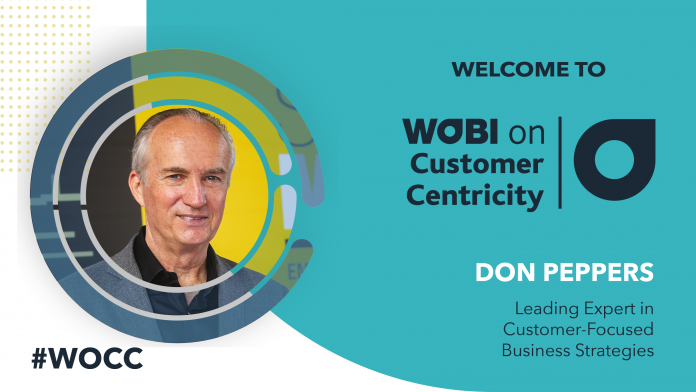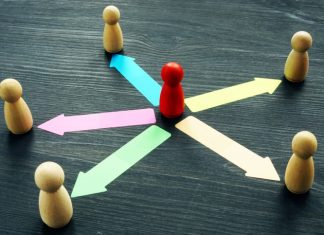With most businesses undergoing various forms of digital transformation, it should come as no surprise that the lack of physical interaction with customers might lead to some complications. Don Peppers, an expert on customer-based business models, is here to tell you that doesn’t have to be the case and sacrificing the physical element of business is not a hindrance to success – even during these unprecedented times.
1. In 1993, you wrote “The One to One Future: Building Relationships One Customer at a Time” with Martha Rogers. Many predictions from that book turned out true. How do you view that vision under the marketing circumstances of today?
Martha Rogers and I met for the first time in early 1990 at a marketing event and agreed to work together on a book about the future of marketing. We wanted to write about how businesses would have to operate differently once technology finally enabled computer-mediated, one-to-one interactions with individual customers. After three years of our faxing things back and forth, Doubleday published The One to One Future.
I vividly remember that the first press we got was a Fortune Magazine review in December 1993 that labeled our work “obnoxious.” We did make a few predictions, however, that in retrospect seem prescient:
- In Chapter 4, “Differentiate Customers, Not Just Products,” we predicted that individual customer analytics would supplant or displace much market research, which it has.
- In Chapter 6, “Manage Your Customers, Not Just Your Products,” we outlined the principles behind what is now called CRM (Customer Relationship Management), a business process that has become nearly universal today.
- In Chapter 8, “Take Products to Customers, Not Customers to Products,” we forecast the rise of e-commerce and home delivery, which every year continues to displace more traditional distribution networks.
Today, of course, the principles and ideas we wrote about in our book look obvious. But in 1993, most marketing professionals felt they were simply “obnoxious.”
2. How have processes and systems changed as the pandemic has shifted customer behaviours? Is it harder to be a large company or a startup? And what recommendations do you have for them to thrive?
One more prediction we made back in 1993 has become particularly relevant because of the pandemic. In Chapter 10, “Society at Light Speed,” we described an interactive future that would revolve around social media groups (we called them “image tribes”), gig jobs (we called it “hunting and gathering”), and remote working (“telecommuting”).
Workers, we predicted, would soon be divided into two distinct classes, which we labeled “theres” and “there nots.” Some workers would have to be there to do their jobs – right there on the factory floor, there operating a vehicle, there running an office, or there providing some kind of face-to-face or physical service. Other workers, however, would be able to do their jobs remotely, because their jobs would be based primarily on data and information, and in an interactive world it wouldn’t really matter where they worked. If anything, of course, the Covid19 pandemic has dramatically accelerated the trend toward remote working.
My gut feeling is that it’s usually better to be a smaller company with more flexibility and resilience in a time of crisis because as a general rule larger companies find it harder to adapt to new circumstances. However, I think the “agile management” methods pioneered originally in software development and startups, but now widely popular in a variety of business situations, can be extremely useful in helping any company – large or small – to navigate the paradigm-shifting threat represented by this pandemic.
3. How is the future looking for advertising and brand purpose?
I don’t think the future looks very bright for advertising, at least as it’s presented currently, most of the time. In a period of crisis and disruption such as this, people “hunker down” and seek information from sources they trust – friends, authorities, and non-self-interested entities. If a brand has been able to establish that it can really be trusted to provide the right information in an objective, unbiased way, to help a consumer solve whatever problem they’re wrestling with, then great. But that’s usually not the case. And consumers have been so conned and deceived in the past that today they can “smell the profit on an advertiser’s breath.”
So for the vast majority of advertisers, Covid19 represents an extra nail or two in the coffin, but for the minority of companies that actually do enjoy the trust and confidence of their customers, the pandemic represents an opportunity to have that trust blossom into long-term value.
4. How does empathy fit into the current business landscape? Can it really give companies a competitive edge when it comes to this new form of business?
Empathy is a natural human instinct, and the pandemic has brought this out dramatically in most of us, as neighbors help neighbors, and customers provide extra-large tips to hairdressers, wait staff, and other service folks whose livelihoods have been more threatened.
Unfortunately, however, empathy is often undermined by authority-heavy, top-down business organizations trying to operate more efficiently by employing rules and algorithms, rather than taking the risk of trusting their own workers to “do the right thing.” And naturally, the mistrust is mutual. Workers know that their company thinks of them not as human beings, but as “resources” that can easily be swapped out with machines, as technology makes it possible.
Forward-thinking companies recognize that customers are human beings, not algorithms. And all humans value empathy. After all, I tell business leaders, empathy is the primary objective of “customer insight” – you want to know what it’s like to BE the customer, to think the customer’s own thoughts, and to feel the customer’s own feelings.
But more than that, empathy is what you generate when you empower your employees to interact and engage with customers, human-to-human. One company, for instance, with a complicated product that is sometimes difficult to operate, has given customer-facing employees the authority to settle a disagreement with a customer by simply asking “What would you consider fair in this situation?” What could be more empathetic than that? And it’s the kind of question that only a person can ask another person – no bot could possibly do engage in this exchange.
Because empathy is something that has been naturally stimulated during the pandemic, it presents an absolutely wonderful opportunity for companies to re-think their structural rules, and to try to enlist the humanity of their employees to empathize with customers.
5. It seems like remote work is here to stay, all the while companies are facing unprecedented workforce challenges. What is the role of a leader in all of this? What is the part they can play?
Now more than ever, the leader’s role is to engage workers in a purpose that is bigger than profits, bigger than shareholder value, bigger than the company itself. Only when everyone is united behind a mission that transcends the business model can an organization begin to let go of the “rules and algorithms” operating method, and begin to trust workers. Workers who are enthused by the mission will do their best to achieve it. Research has even shown that such workers are more likely to break the rules when necessary to achieve the mission.
So leaders have to be the story-tellers who paint a picture of this more trusting, purpose-driven future for their business. At a truly customer-centric firm leaders will:
- Constantly accumulate more expertise in customer centricity,
- Communicate and live by customer-centric values,
- Measure success based on the customer value created (as opposed to short-term profits),
- Cross boundaries for enterprise-wide results,
- Make regular, direct contact with customers, and
- Focus on incremental projects and “quick wins” to demonstrate progress.
6. Are education systems still the biggest weakness of democracies today?
Yes.
7. It is election year. Are we next to seeing new ways of government with the pandemic changing everything we know?
Every year is election year somewhere in the world. But in the United States, no matter who wins this year’s election, I do think we will see a purposeful effort on the part of government leaders to make our relatively cumbersome, bureaucratic government more flexible. Government could benefit from agile methodologies nearly as much as businesses do.
And in the U.S. we are fortunate that our civil service employees are largely immune from the short-term political motives that often characterize elected officials. This frees them up to be mission-oriented and driven by purpose.
8. Will this new pandemic change the idea of how valuable customers are?
Every crisis presents opportunities, and this one is no different. The pandemic should motivate companies to re-think their customer relationships, and to focus not just on short-term profits but on long-term customer loyalty and shareholder value. After all, without customers you don’t have a business. All you have is a hobby.
9. In all of your years, what is a quick and noteless tip you have discovered about finding that “direction of success” for your team?
Treat the customer the way you’d like to be treated if you were the customer.
Do this, and everything else will fall into place, sooner or later!
About the Interviewee
Don Peppers is a leading expert in customer-focused business strategies. He is also a best-selling author and marketing futurist. His latest book, Customer Experience: What, How and Why Now, provides insights and “how to” recommendations for building and maintaining a truly customer-centric business.
Don Peppers will lead the digital seminar “WOBI on Customer Centricity” on 29-30 September & 1 October.





































